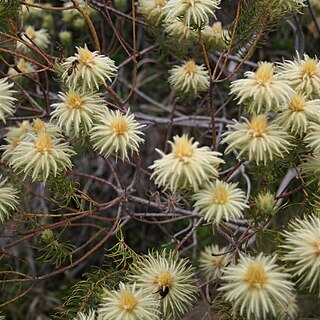Leaves alternate, simple, shortly petiolate; lamina with margins usually revolute; stipules absent (except in one species outside our area).
Ovary inferior, 3-locular; ovules 1 in each loculus; style simple; stigma minutely 3-lobed.
Sepals 5, erect or spreading, variously shaped, often with a prominent median vein within.
Seeds somewhat 3-sided; funicle dilated into a lobed aril embracing the base of the seed.
Disk usually distinct and lining the receptacle or fleshy almost filling the receptacle.
Inflorescence a spike, raceme or capitulum, or with flowers axillary and solitary.
Receptacle campanulate, urceolate, cylindric, obconic or terete, 5-angled.
Fruit a capsule, mostly crowned with the persistent calyx.
Stamens 5, inserted below the petals; anthers 1–2-thecous.
Petals 5 (or absent), small, cucullate, unguiculate.
Shrublets, shrubs or small trees.
Flowers bisexual.
